The Guardian Dashboard
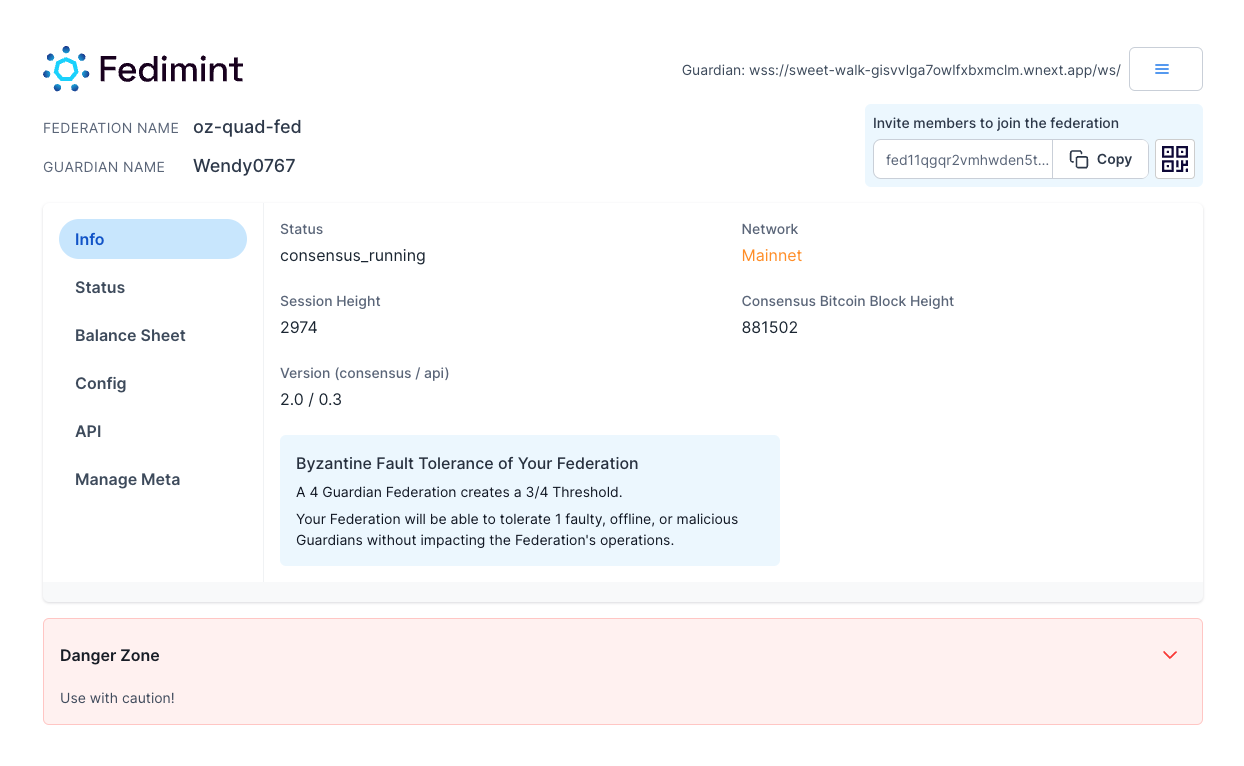
Download your backup❗
Before proceeding with anything else, the first and most important step in maintaining a Guardian is to download your backup. This is a file that contains private keys and secret material for the federation guardian and must be kept secure. Recovery using this backup requires your admin password! So be sure to check that the password you used during the setup ceremony is also backed up and secured.
Click the red box at the bottom of the dashboard to expand the Danger Zone. Then click the Download Backup button, read the informational text and then click Acknowledge & Proceed. This will download a .tar file to your local machine which should be saved in a secure location.

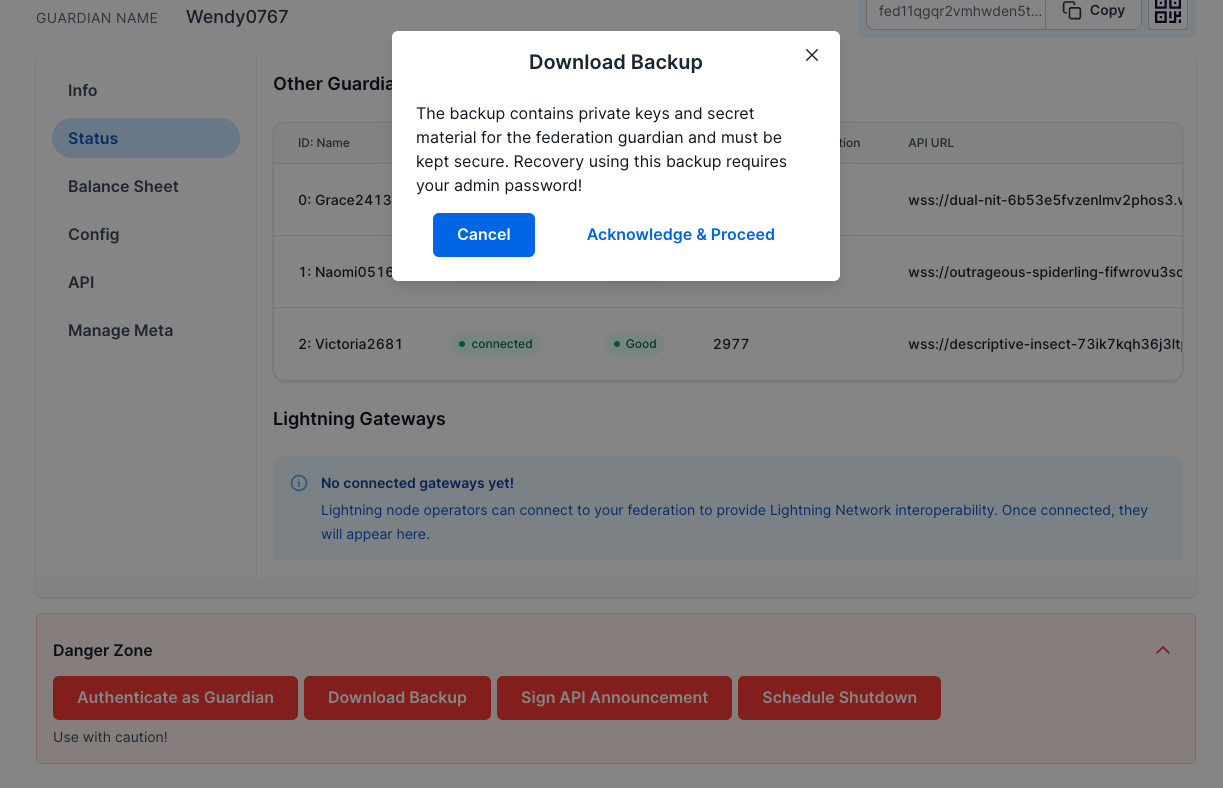
Overview
Once you've completed the setup ceremony and your Fedimint is up and running, your Guardian is basically on autopilot. You should monitor your Fedimint to ensure that it's healthy and online, but otherwise it doesn't require any interaction.
The Fedimint consensus is Byzantine Fault Tolerant, meaning that it can tolerate up to 1/3 of the custodians being offline or compromised without affecting users. As a responsible Guardian though, you should monitor your Fedimint to ensure that it's healthy and online. Fedimint's included a few tools to help you do this.
You can use the invite code (string or QR code), listed on the dashboard to connect clients like Fedi to your federation after it's set up. Just scan or enter the code from Fedi.

The Guardian Dashboard is the main interface for monitoring your Fedimint Guardian Node, and for Fedimints deployed on Clovyr it is the default interface. If you're running fedimint from your own Docker setup this UI defaults to port :3000.
The Dashboard shows you:
Info
- This shows general information about your Guardian node including session height, version & network the fedimint is running on, & consensus block height
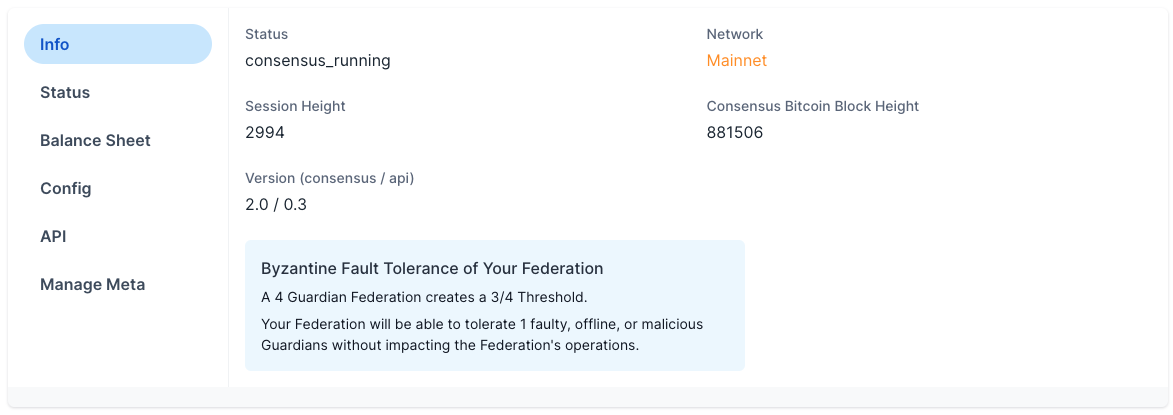
Status
- This view shows the status of the other guardians in the federation including guardian names, connection status & health, session height, & API URL
- It also shows a table of Lightning Gateways registered with the Fedimint. See the Lightning Gateway Guide for more details on how to help users spin up lightning gateways and connect them to your Fedimint.
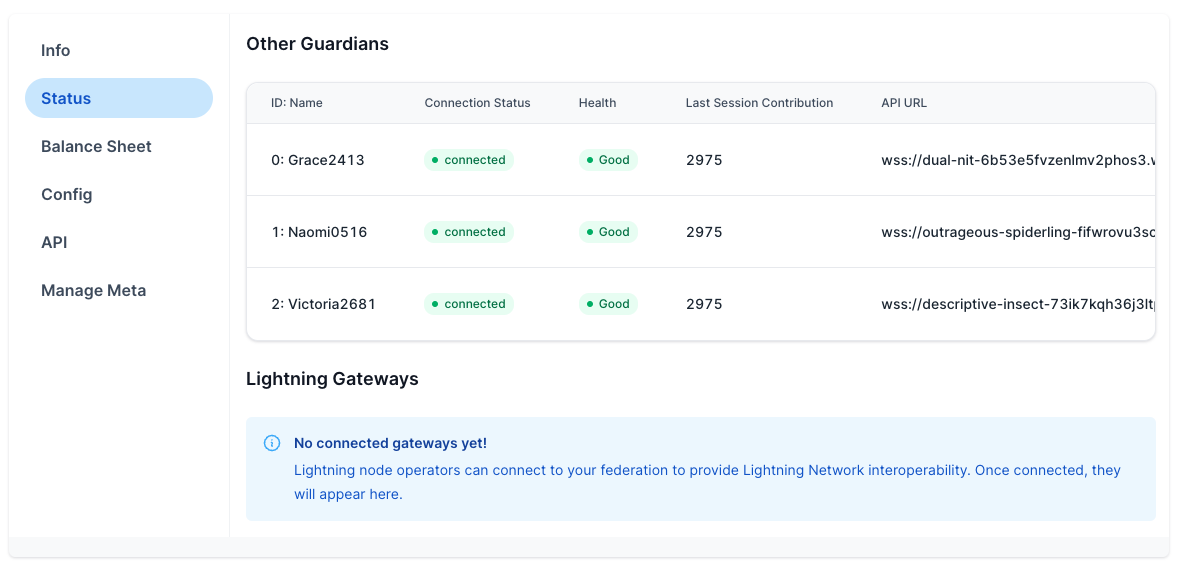
Balance Sheet
- This shows a table of current assets & liabilities for each module your federation has been configured to support. The sums of each column should zero out to confirm Full Reserve status.
- You can also change the displayed denomination between BTC, sats and msats (millsats) according to your accounting preference
- Fedimint uses Chaumain Ecash to issue blinded claims against deposits. These claims are 1-1 representations of the deposits, and can be redeemed on-chain by the Fedimint. However, ecash accounting allows the user to maintain absolute privacy from the mint: the user's anonymity set for any notes they spend/withdraw in a transaction is the entire set of notes (of that denomination) ever issued by the Fedimint. This means that the Fedimint can't know how many notes are in circulation, or how many users are using the Fedimint. The Fedimint can only know the total reserves and liabilities of the Fedimint, and the total number of notes issued. This is a feature, not a bug, and is a core part of the Fedimint's privacy model.
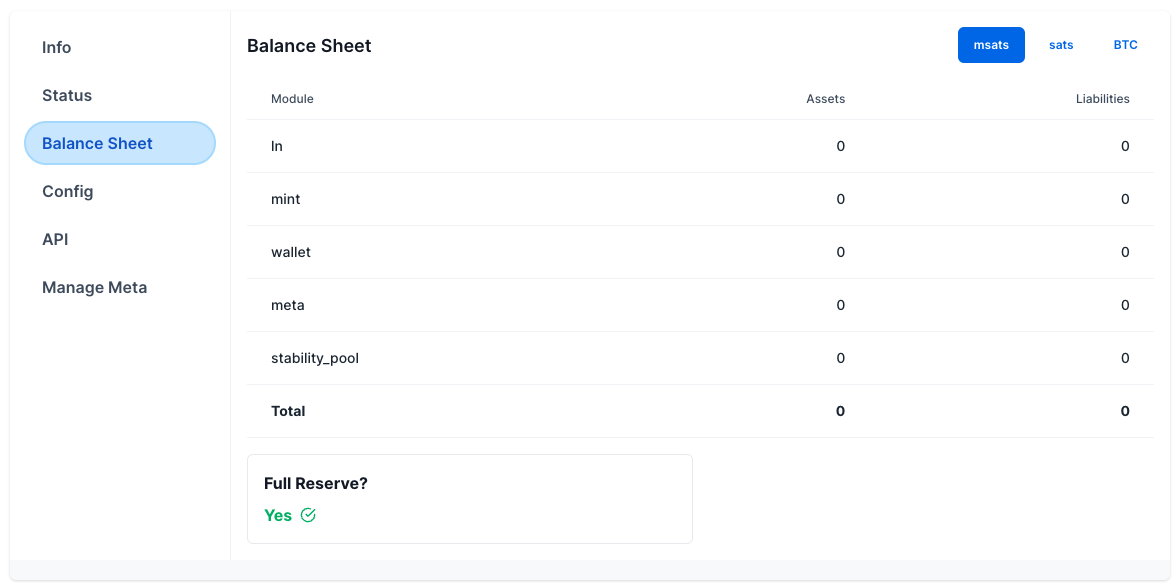
Config
- This is the full JSON file representing the configuration of your Guardian node. It mostly contains technical information about the guardian servers & the individual modules supported by your federation.
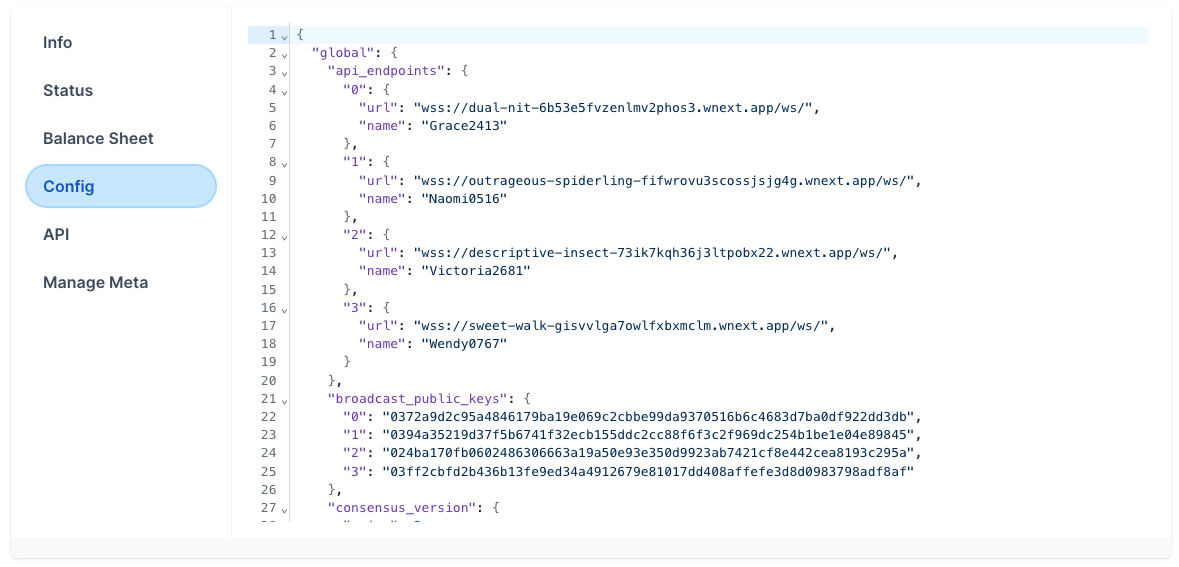
API
- This shows a table of the API endpoints of each guardian server in the federation. These endpoints can be revised with a voting process and any approved revisions should be represented in the table.
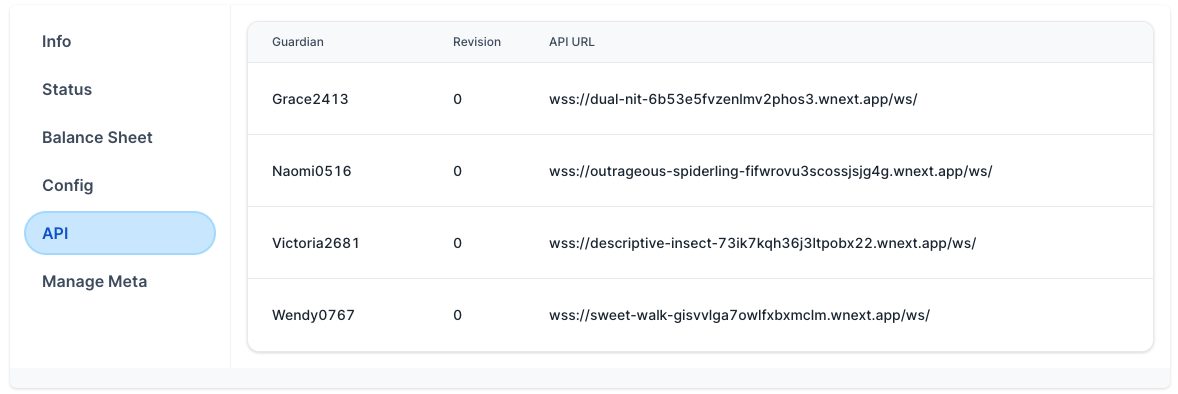
Managing Metadata
- Here you can manage the metadata for your federaton, but each change must be voted on and approved by the other guardians. Fedimint supports a basic set of meta fields that are documented here.
- Additionally, the Fedi app supports a richer set of customization options using these same metadata fields that you can learn more about here.
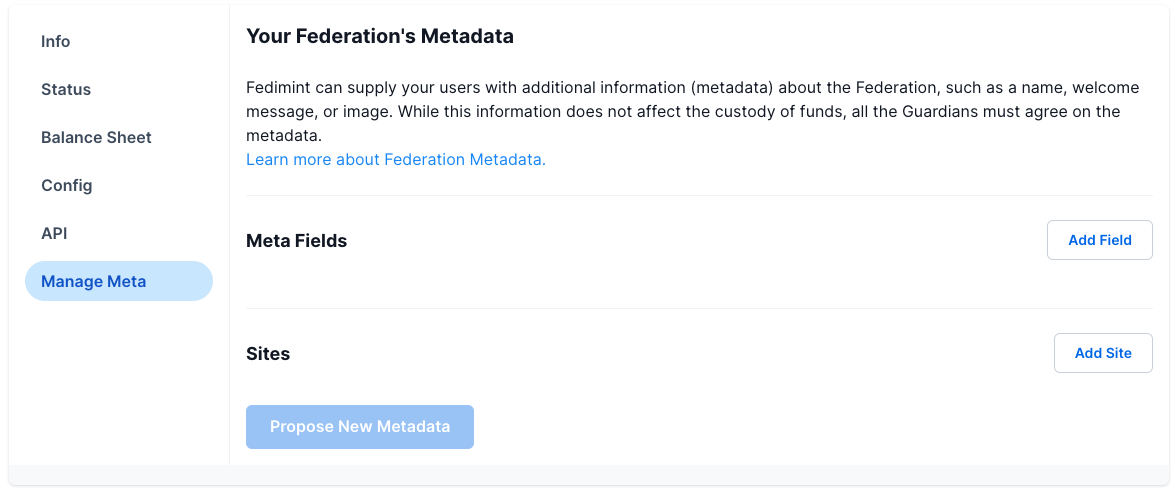
Proposals & Voting
This guide will walk through the proposal & voting process for changing the name, image, & welcome message for your federation and you can refer to each of the documentation links above for more details about other specific fields.
- To propose a meta change, click the
Add Fieldbutton in the Meta Fields section to add a new entry requiring both a Key and Value - Replace
custom_1with thefederation_namefor the key and enter a new federation name for the value
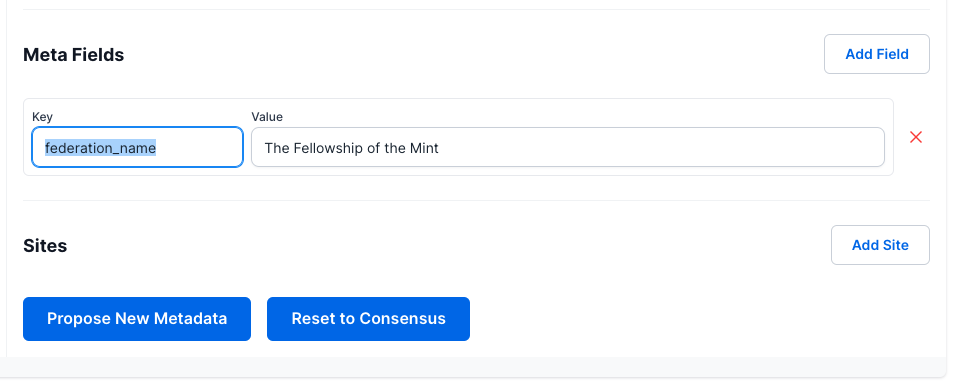
- Add a 2nd field and enter
welcome_messagefor the key and a message that members of your federation will see when they first join your federation
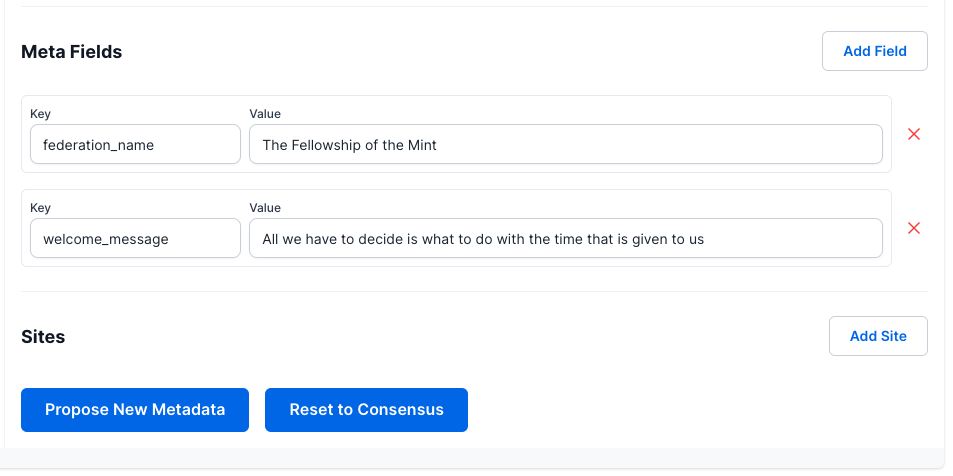
- For the 3rd field, we will use a custom key used specifically by the Fedi app to display an image for your federation. Fedimint does not currently support file uploads so you must use a URL that points to an external image hosted anywhere online. You can use Google Image Search to find an image, or upload your own to a service like Imgur.
- Sites (also known as "Fedi Mods") are configured with a special key used by the Fedi app (under the hood this is just stringified JSON) to display a list of websites on the main community screen that members see after joining your federation. To configure a site, you must add an ID, URL, Title, and image URL. The ID can be anything, but you cannot reuse it for another site. You can just use numbering (1, 2, 3, etc.) to keep this simple. The URL should be a valid URL that points to a website. The image URL must be a valid image and will be displayed as an icon. The Title will appear just below the icon.

- Review your proposed changes before proceeding. You can also remove individual entries using the red
Xbutton OR clickReset to Consensusto clear ALL entries and start over! - Click
Propose New Metadatawhen you are satisfied with your changes - When there is at least 1 proposal active, the Meta Proposals tab will appear. Ask your other guardians to log into their dashboard and click the tab to vote on the proposal. They should see your proposed changes and can approve it or just do nothing to ignore it.
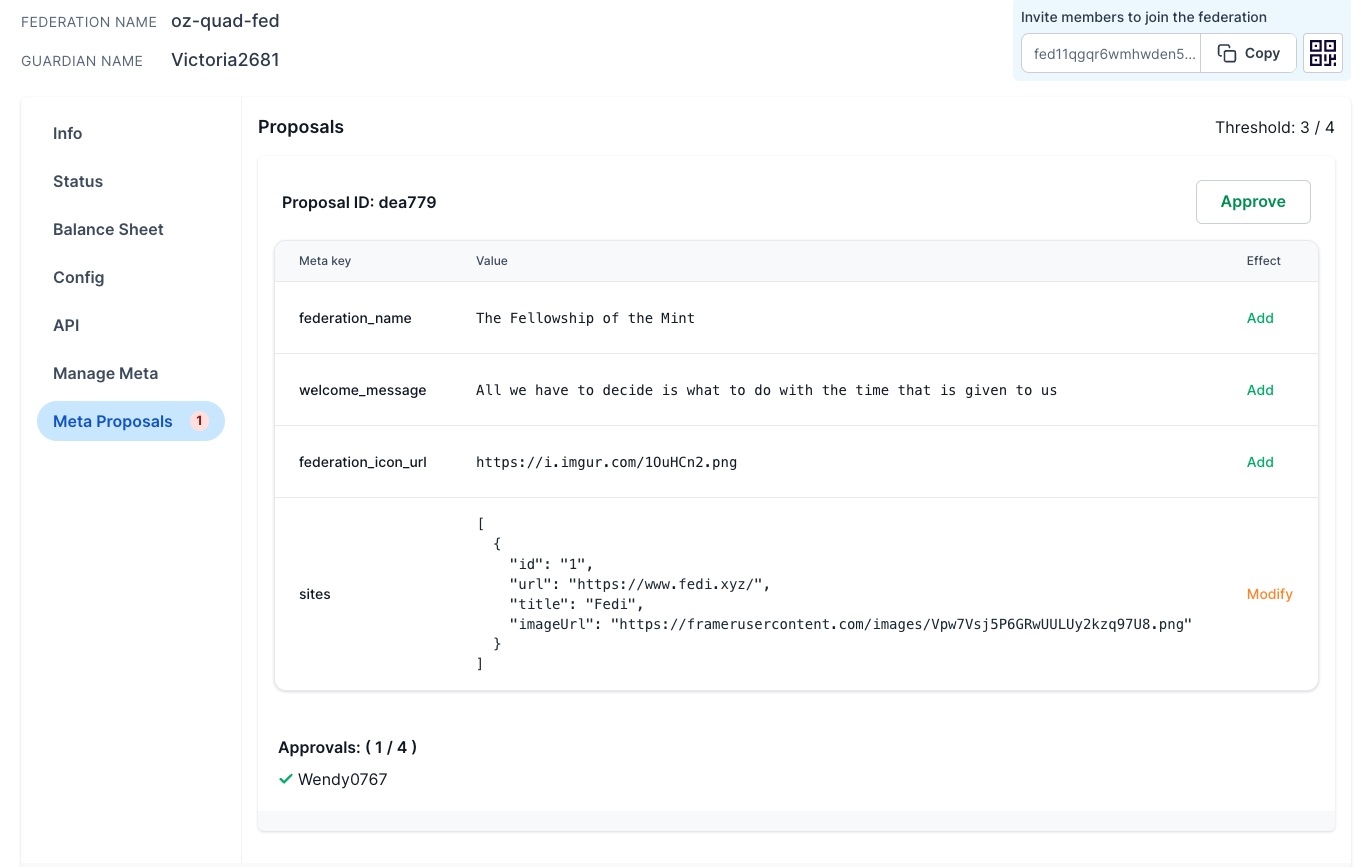
- When 1 more guardian clicks Approve, the proposer can see a list of who approved it and how many more votes are needed. The proposer can also click the Revoke button to cancel the proposal and start over. After a proposal has been approved by a threshold number of guardians, the proposal can no longer be revoked. A new proposal would be needed to undo the changes.
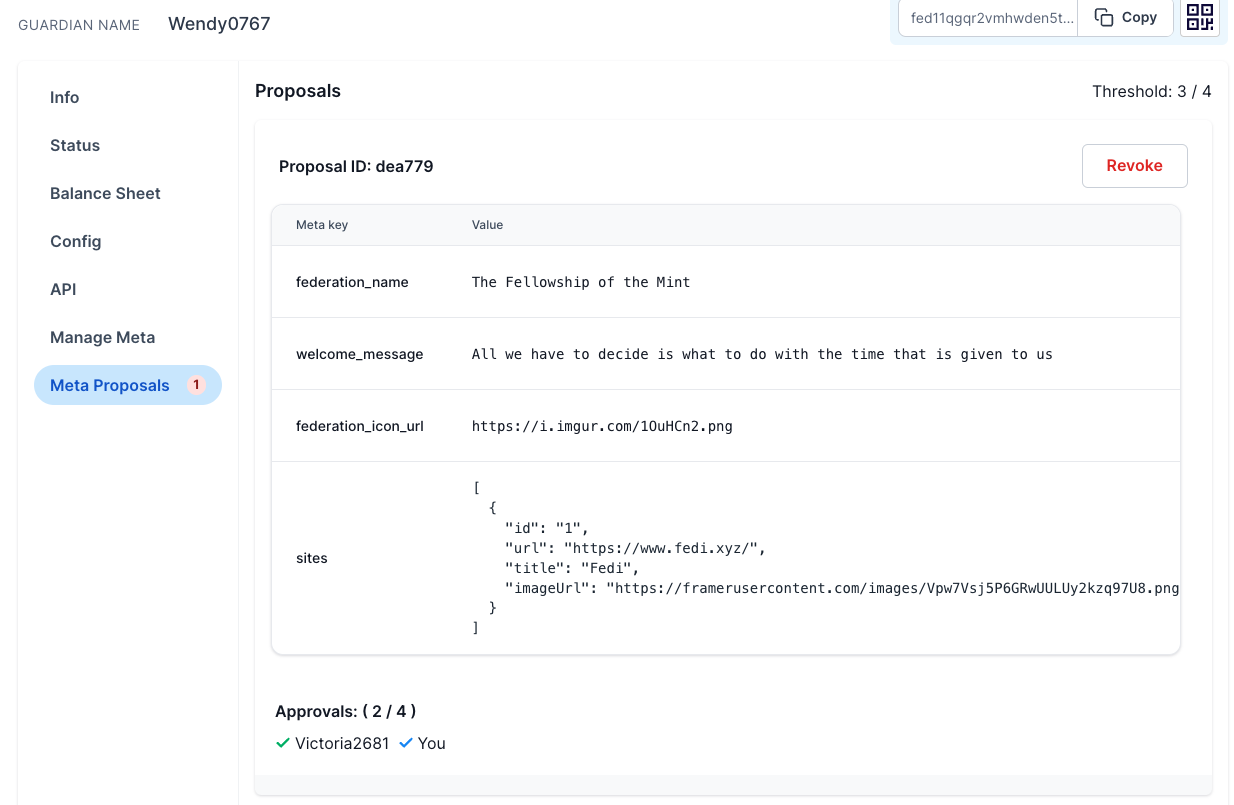
- Once the proposal is approved by a threshold number of guardians, the changes will be reflected in the Manage Meta section of the dashboard.
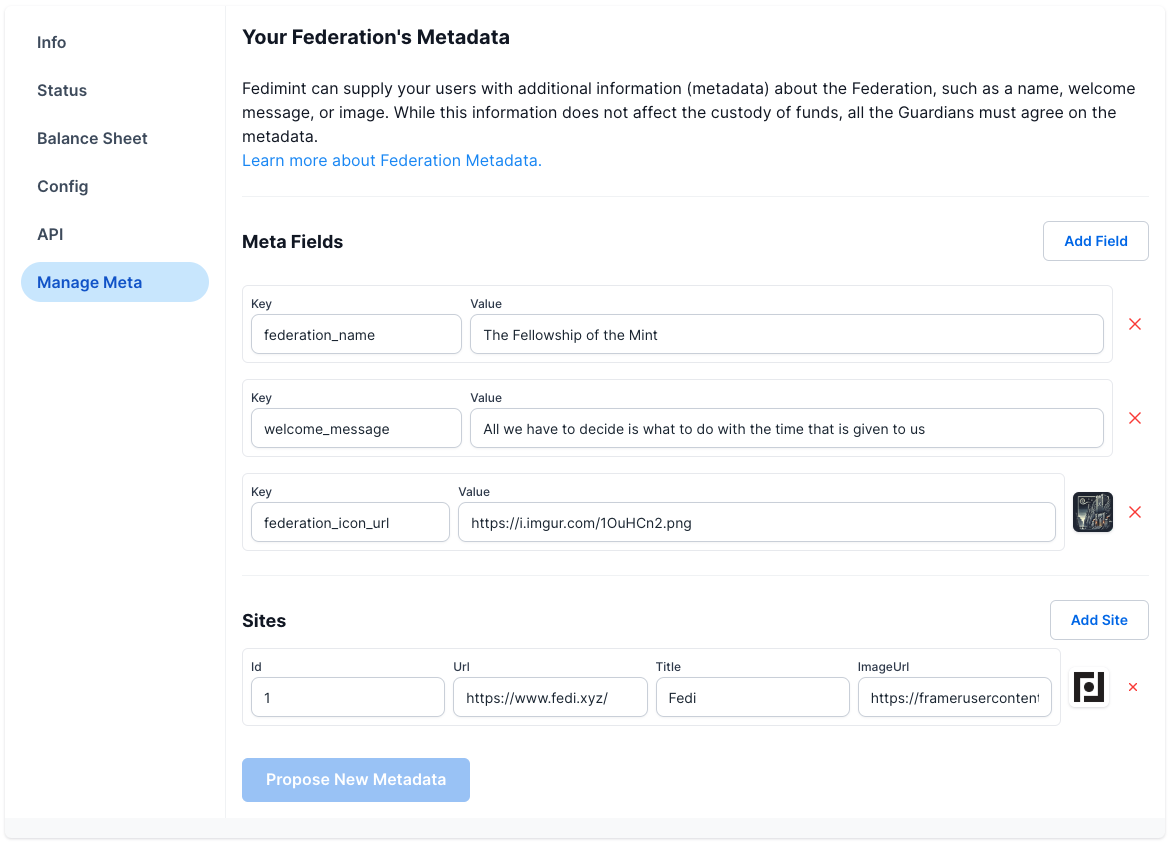
Next Steps
There are many more customization options available in the Fedi app. Click here to learn more about Fedi's Meta Fields.
After you have all of your metadata set up, you can now start sharing your invite code allowing users to join your federation! See this guide for more details: Joining Federations